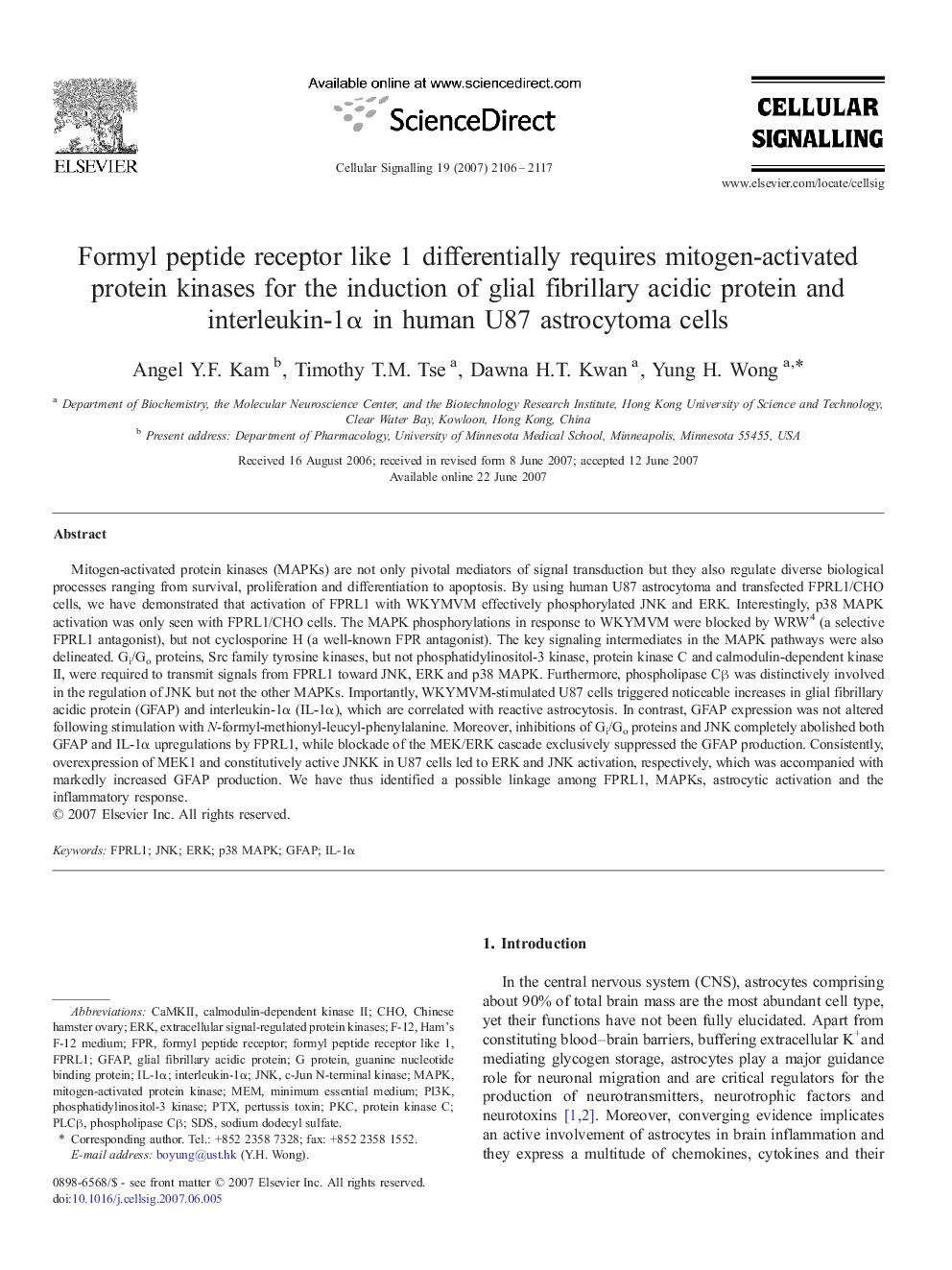| Article ID | Journal | Published Year | Pages | File Type |
|---|---|---|---|---|
| 1964373 | Cellular Signalling | 2007 | 12 Pages |
Mitogen-activated protein kinases (MAPKs) are not only pivotal mediators of signal transduction but they also regulate diverse biological processes ranging from survival, proliferation and differentiation to apoptosis. By using human U87 astrocytoma and transfected FPRL1/CHO cells, we have demonstrated that activation of FPRL1 with WKYMVM effectively phosphorylated JNK and ERK. Interestingly, p38 MAPK activation was only seen with FPRL1/CHO cells. The MAPK phosphorylations in response to WKYMVM were blocked by WRW4 (a selective FPRL1 antagonist), but not cyclosporine H (a well-known FPR antagonist). The key signaling intermediates in the MAPK pathways were also delineated. Gi/Go proteins, Src family tyrosine kinases, but not phosphatidylinositol-3 kinase, protein kinase C and calmodulin-dependent kinase II, were required to transmit signals from FPRL1 toward JNK, ERK and p38 MAPK. Furthermore, phospholipase Cβ was distinctively involved in the regulation of JNK but not the other MAPKs. Importantly, WKYMVM-stimulated U87 cells triggered noticeable increases in glial fibrillary acidic protein (GFAP) and interleukin-1α (IL-1α), which are correlated with reactive astrocytosis. In contrast, GFAP expression was not altered following stimulation with N-formyl-methionyl-leucyl-phenylalanine. Moreover, inhibitions of Gi/Go proteins and JNK completely abolished both GFAP and IL-1α upregulations by FPRL1, while blockade of the MEK/ERK cascade exclusively suppressed the GFAP production. Consistently, overexpression of MEK1 and constitutively active JNKK in U87 cells led to ERK and JNK activation, respectively, which was accompanied with markedly increased GFAP production. We have thus identified a possible linkage among FPRL1, MAPKs, astrocytic activation and the inflammatory response.
